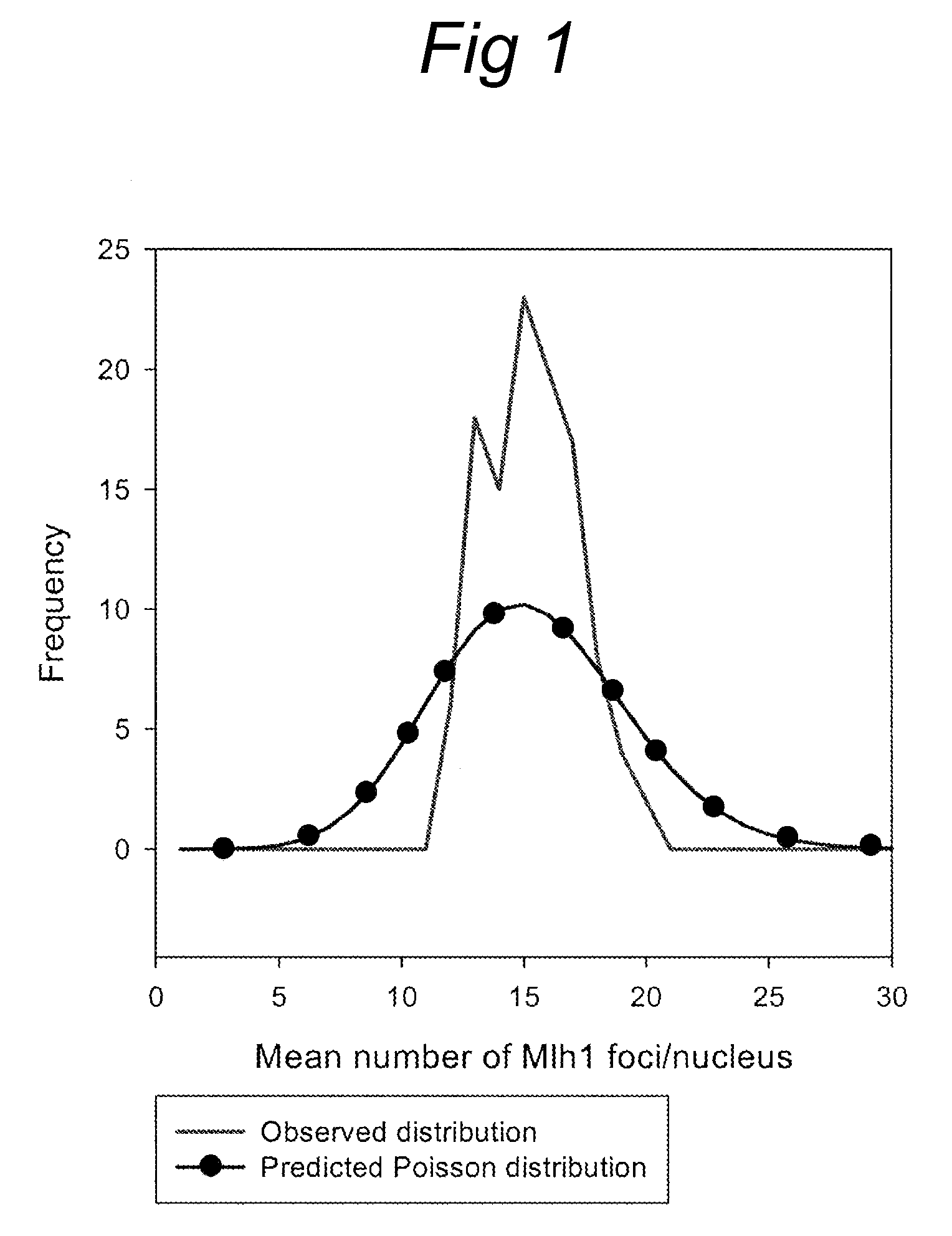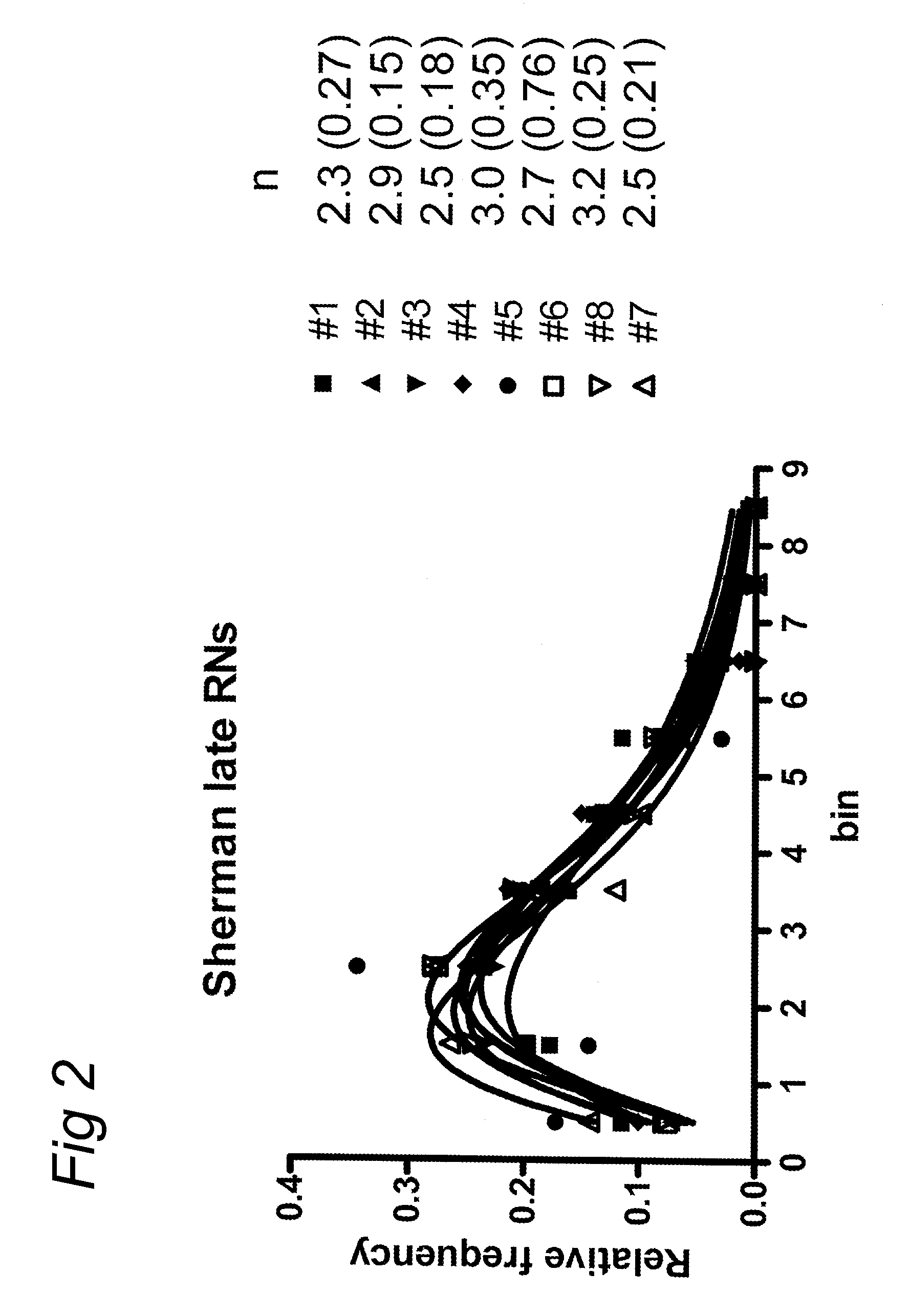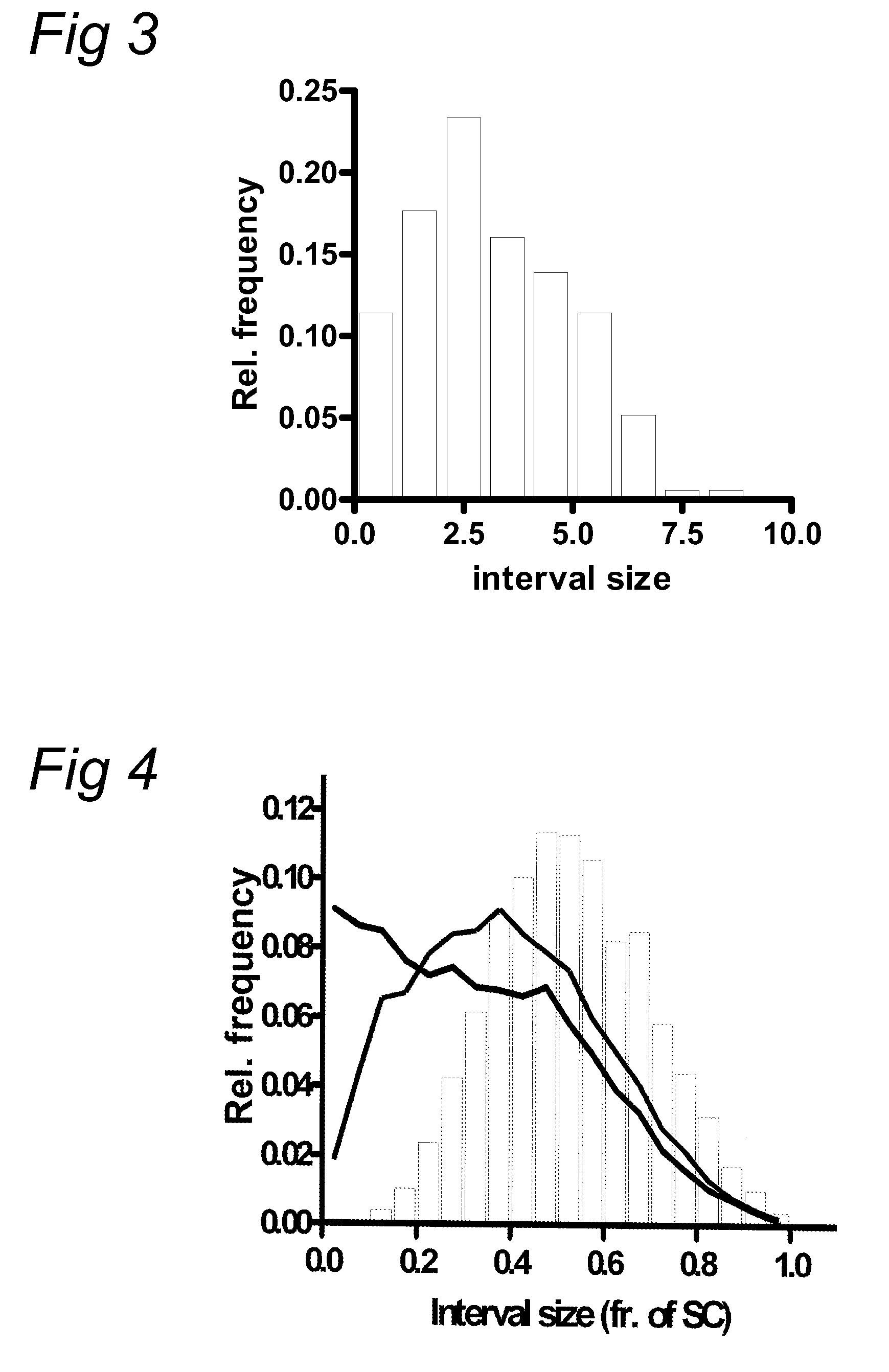Homologous recombination in plants
a recombination and plant technology, applied in the field of biotechnology, can solve the problems of preventing recombination, unable to generate recombinants with an altered genetic make-up in those regions, and affecting the progress of breeding
- Summary
- Abstract
- Description
- Claims
- Application Information
AI Technical Summary
Benefits of technology
Problems solved by technology
Method used
Image
Examples
examples
1. Tomato mlh1 Gene and Proteins
[0147]Tomato cDNA clones encoding MLH1 were isolated and sequenced. The cDNA and amino acid sequences are shown in SEQ ID NO: 1 and SEQ ID NO: 3.
2. Antibody Production
[0148]The isolated tomato cDNA clones encoding MLH1 were used for anti-MLH1 antibody production. C-terminal, middle and N-terminal amino acid stretches were used to raise antibodies in rabbit. Antibodies raised against the MLH1 C-terminal gave the best signal, although antibodies raised against the N-terminal part also gave a signal, but weaker. The middle part of the protein seemed less suitable for raising antibodies. The antibodies used in the further assays were antibodies raised against SEQ ID NO: 4 (encoded by SEQ ID NO: 5), which comprises C-terminal tomato MLH1 amino acids from the amino acid at position 443 to amino acid 601.
[0149]In addition tomato cohesin SMC1 (LeSMC1), SMC3 (LeSMC3) and tomato kinetochore protein CENP-C (LeCENP-C) amino acid sequence stretches were used to pr...
PUM
| Property | Measurement | Unit |
|---|---|---|
| Fraction | aaaaa | aaaaa |
| Fraction | aaaaa | aaaaa |
| Fraction | aaaaa | aaaaa |
Abstract
Description
Claims
Application Information
 Login to View More
Login to View More - R&D
- Intellectual Property
- Life Sciences
- Materials
- Tech Scout
- Unparalleled Data Quality
- Higher Quality Content
- 60% Fewer Hallucinations
Browse by: Latest US Patents, China's latest patents, Technical Efficacy Thesaurus, Application Domain, Technology Topic, Popular Technical Reports.
© 2025 PatSnap. All rights reserved.Legal|Privacy policy|Modern Slavery Act Transparency Statement|Sitemap|About US| Contact US: help@patsnap.com



